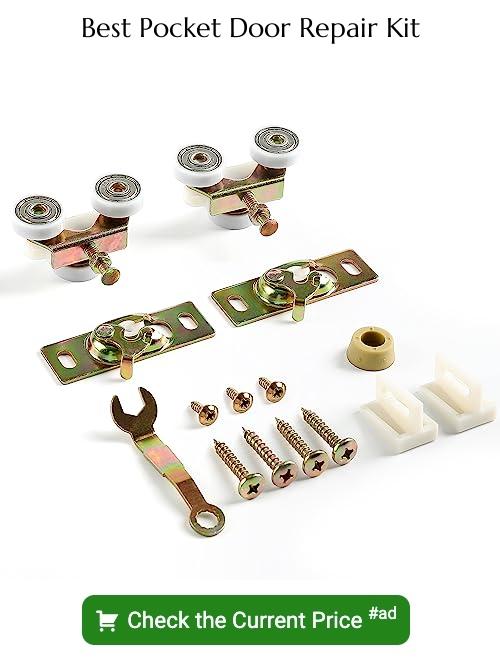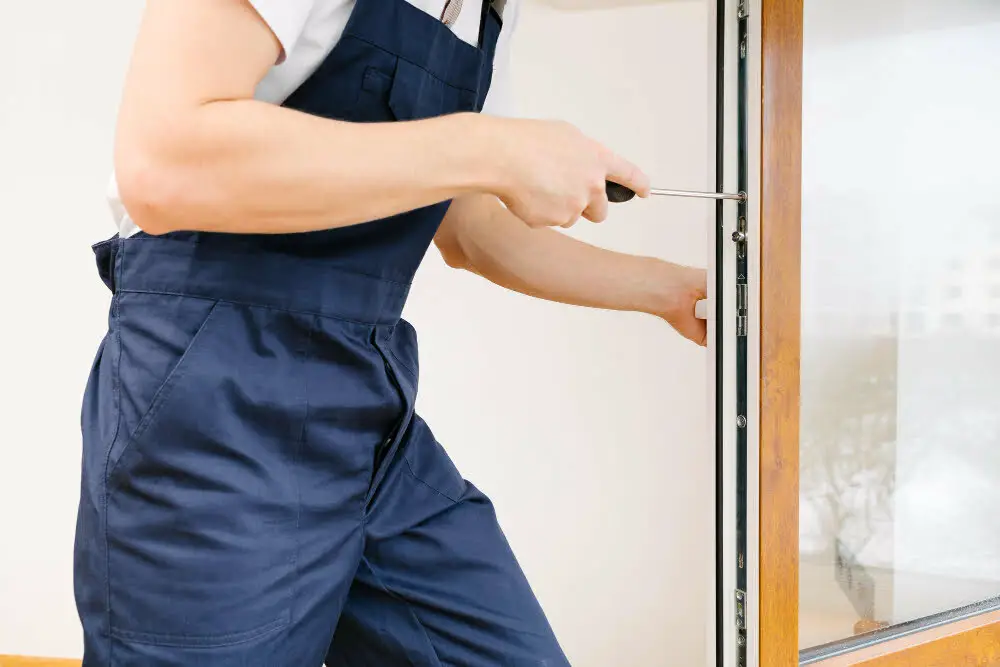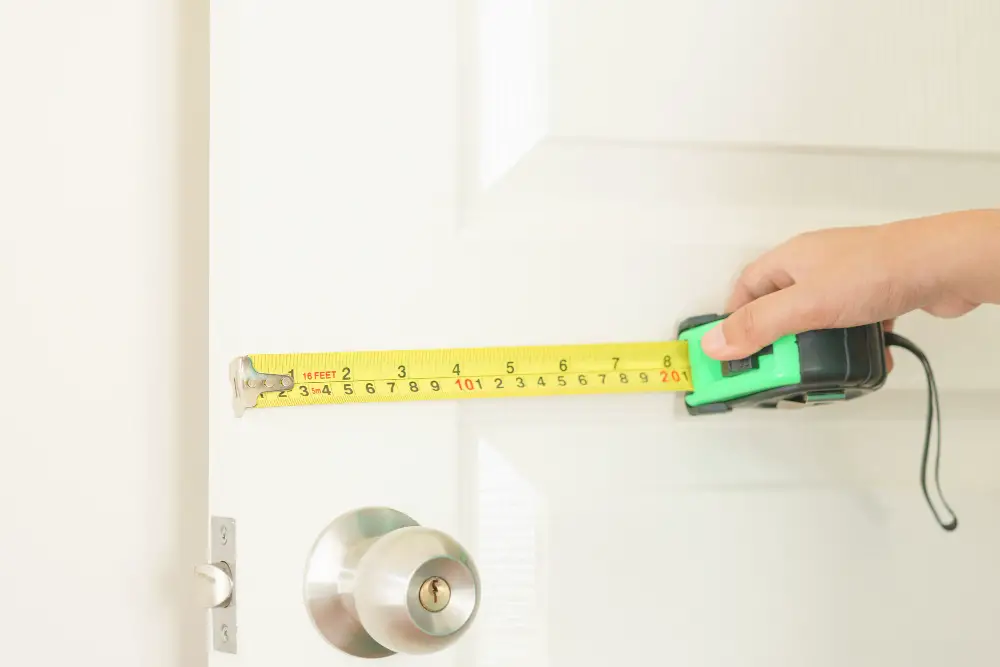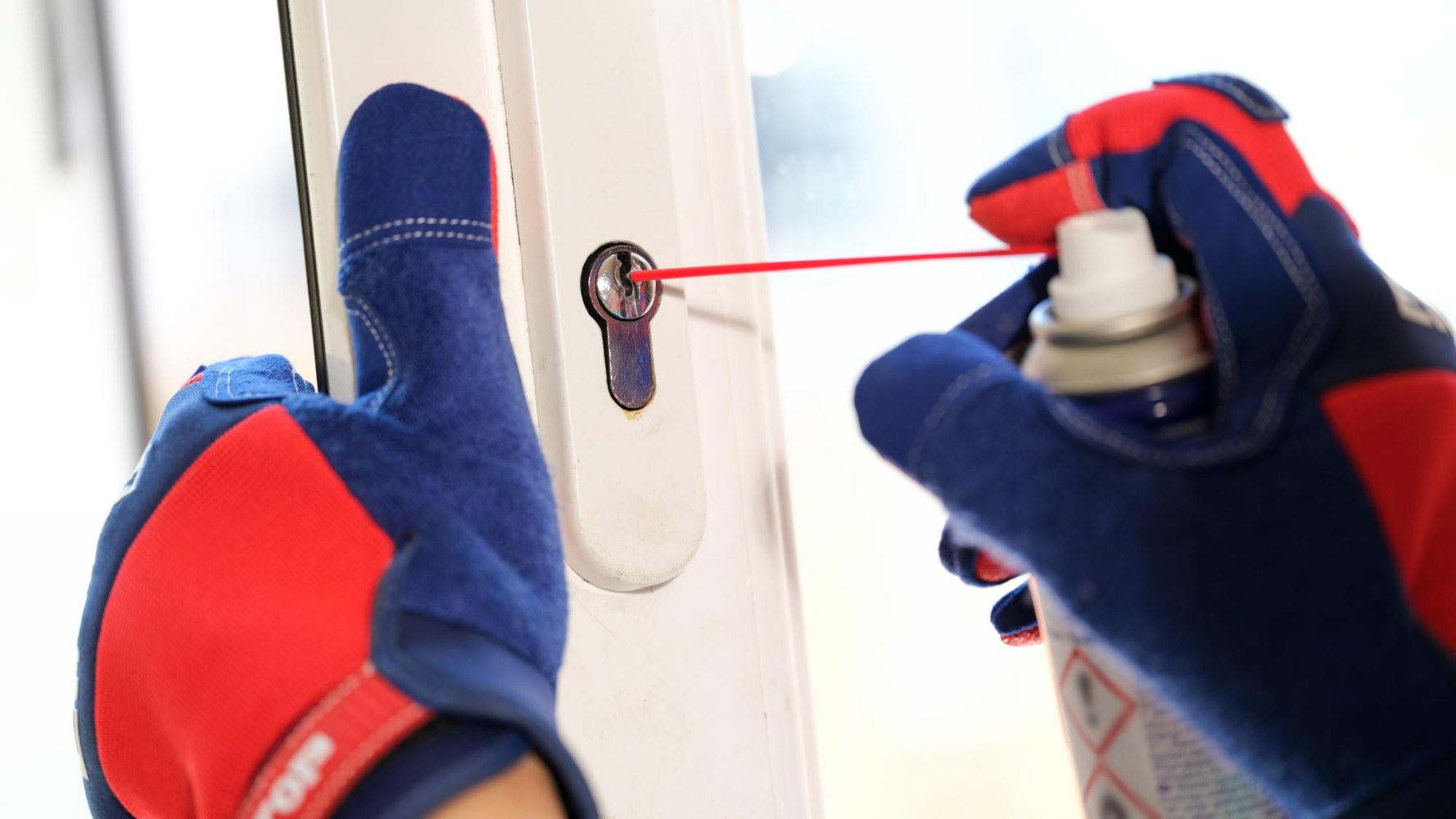Last updated on
Discover the simple steps to fix a pocket door effectively. Ensure smooth operation and seamless functionality in your home.
Pocket doors are a great space-saving solution for small homes or rooms with limited floor space. They slide effortlessly into the wall, freeing up valuable square footage that a swinging door would otherwise take up.
However, like any other home feature, pocket doors can experience wear and tear over time. If your pocket door is sticking or not sliding correctly, don’t worry – you don’t have to replace it yet! In this article, we’ll walk you through how to fix a pocket door step-by-step so that you can enjoy its functionality for years to come.
Key takeaways:
- Lubricate pocket door rollers
- Tighten pocket door on track
- Remove the pocket door trim
- Replace pocket door track
- Fix uneven or misaligned pocket door
Table of Contents
How a Pocket Door Works

Pocket doors are a popular choice for homeowners looking to save home space. They work by sliding along a track installed inside the wall, allowing them to disappear completely when not in use.
The door panel is mounted on rollers that glide smoothly along the track, making it easy to open and close without taking up valuable floor space.
The pocket itself is created by framing an opening in the wall where the door will slide when opened. This requires careful planning and precise measurements during installation so everything fits together perfectly.
Over time, however, pocket doors can experience wear and tear just like any other home feature.
What You’ll Need
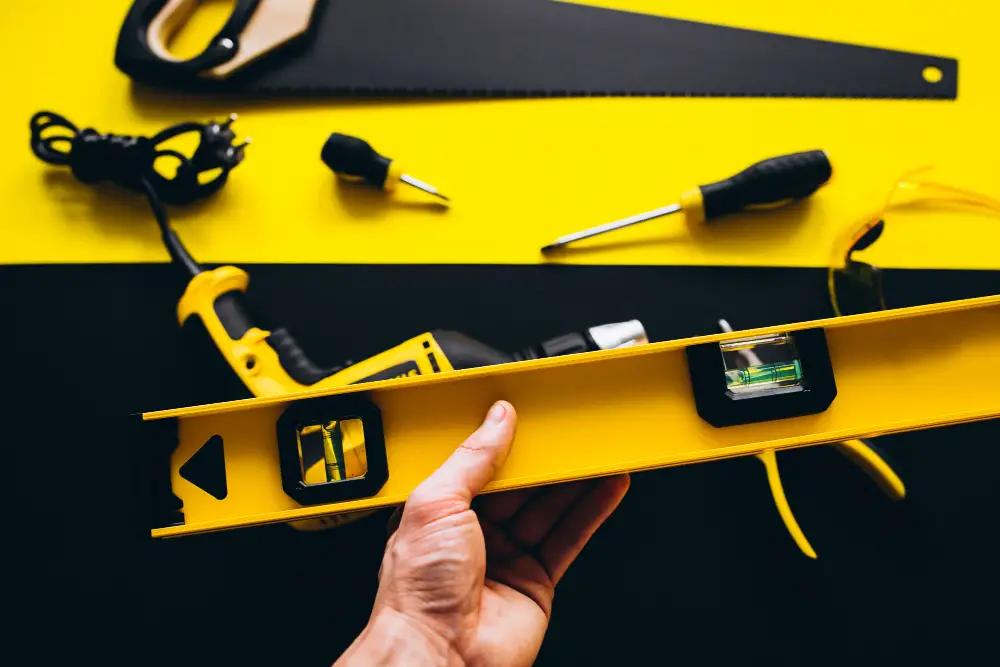
Here are some of the items you’ll need:
1. Screwdriver: You’ll need a screwdriver to remove any screws holding the door in place or securing its hardware.
2. Pry bar: A pry bar can gently remove the trim around the pocket door without damaging it.
3. Level: A level will help ensure that your new track is installed correctly and that your pocket door slides smoothly.
4. Measuring tape: You’ll need a measuring tape to measure the width and height of your existing track so you can purchase a replacement with accurate dimensions.
5. Replacement parts: Depending on what needs fixing, you may also require replacement parts such as rollers, tracks, or stops for your pocket doors.
Lubricate Pocket Door Rollers
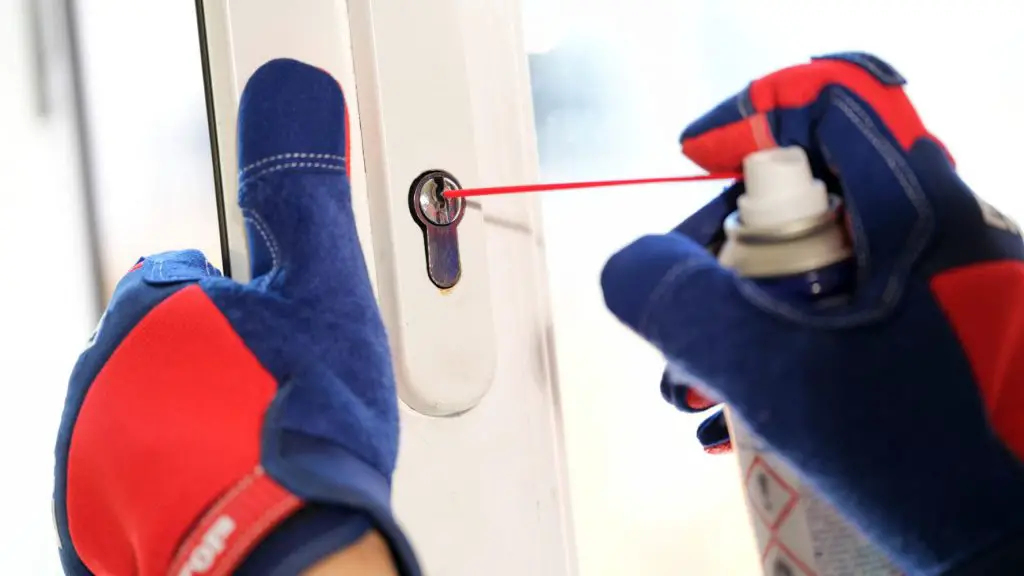
This can cause the door to stick or not slide smoothly along its track. The first step in fixing a pocket door is to lubricate the rollers.
You’ll need a silicone-based lubricant spray and a clean cloth to do this. Clean any dirt or debris from the roller tracks using your cloth.
Then, spray each roller generously with lubricant and wipe away any excess.
Once you’ve finished applying lubricant to all the rollers, test out your pocket door’s movement by sliding it back and forth along its track several times.
Tighten Pocket Door On Track
Here’s how:
- Locate the adjustment screws at the bottom of the door.
- Use a screwdriver to turn each screw clockwise until they are snug against the track.
- Test your door by sliding it back and forth along its track.
If tightening these screws doesn’t solve your problem, you may need to adjust other parts of your pocket door system, such as rollers or tracks worn over time.
Remove the Pocket Door Trim
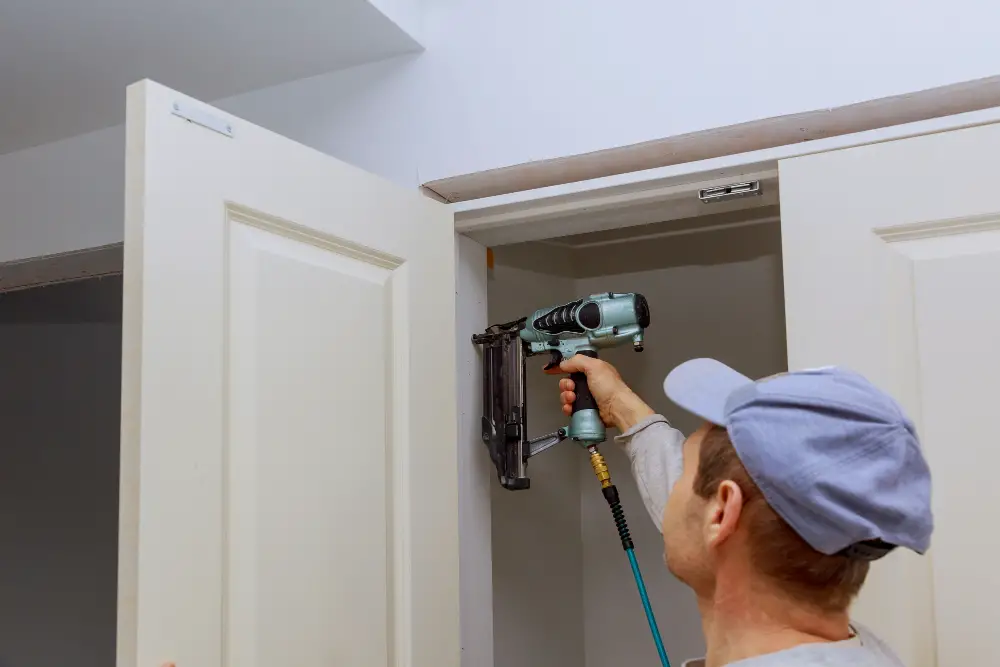
Start using a pry bar or putty knife to gently loosen and remove any caulk or paint around the edges of the trim. Then, use a hammer and small nail set to carefully tap out any finishing nails, holding them in place.
Once all the nails have been removed, gently pull away each piece of trim from around your pocket door frame until they are completely free. Be sure not to damage them as you do so – if necessary, use a flathead screwdriver or similar tool as leverage.
With your pocket door’s hardware now exposed and accessible, you can move on with fixing any issues that may be causing problems with its operation.
Replace Pocket Door Track
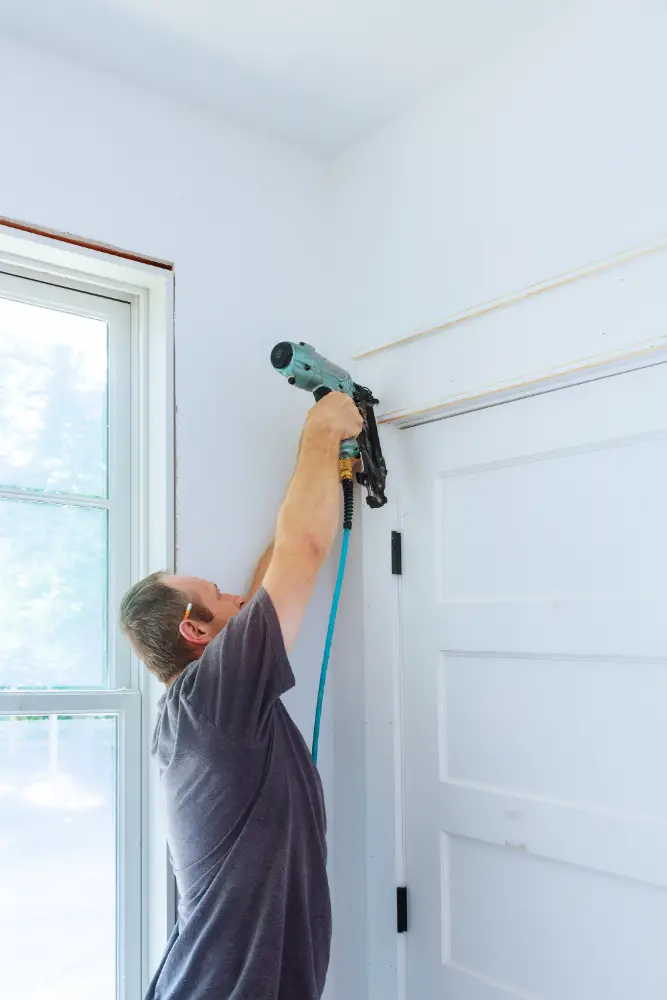
Here’s how:
1. Remove Pocket Door Trim: Remove any trim or casing around the pocket door frame.
2. Remove Old Track: Remove any screws or nails holding the old track in place and gently pry it away from the wall.
3. Install New Track: Once you have removed all the old hardware, install a new pocket door track that matches your existing one using screws or nails.
4. Reattach Rollers to Door Panel: Reattach your rollers to each side of your door panel with screws in their kit after installing a new track.
5. Rehang The Door: Finally, hang back up the doors into their original position by lifting them onto their tracks and sliding them back into place within their frames.
Fix Uneven or Misaligned Pocket Door

Fortunately, fixing an uneven or misaligned pocket door is a relatively simple process you can do yourself with just a few tools.
Firstly, check if the rollers are properly aligned on both sides of the door. If they’re not in line with each other, adjust them until they are level.
You may need to loosen the screws on one side and tighten them on another side.
Next up is checking whether any debris is stuck between the rollers and tracks, obstructing to smooth movement of doors along its path. Clean any dirt or debris inside the track using a vacuum cleaner or compressed air blower.
Ensure that all screws holding your pocket door frame together are tight enough so that nothing moves when you open/close it again after making adjustments, as mentioned above.
Re-Level Pocket Door Track
Over time, a pocket door’s weight can cause its track to become unlevelled and misaligned. To fix this issue, you’ll need a level and shims.
Firstly, remove the trim around the pocket door frame to access the top of the track. Then use a level to check if it’s straight or not – if it isn’t even across its length; then shim up one end until everything lines up correctly again.
Tips for Removing Doors

Removing a pocket door can be tricky, but with these tips, you’ll have it off quickly.
First, locate and remove any screws or nails holding the stopper. The stopper is usually located at either end of the track and prevents your pocket doors from sliding too far into their pockets.
Next up is removing any trim around your doorway. Use a pry bar or screwdriver to gently loosen each trim piece before carefully pulling them away from the wall.
Remove the Door Stops
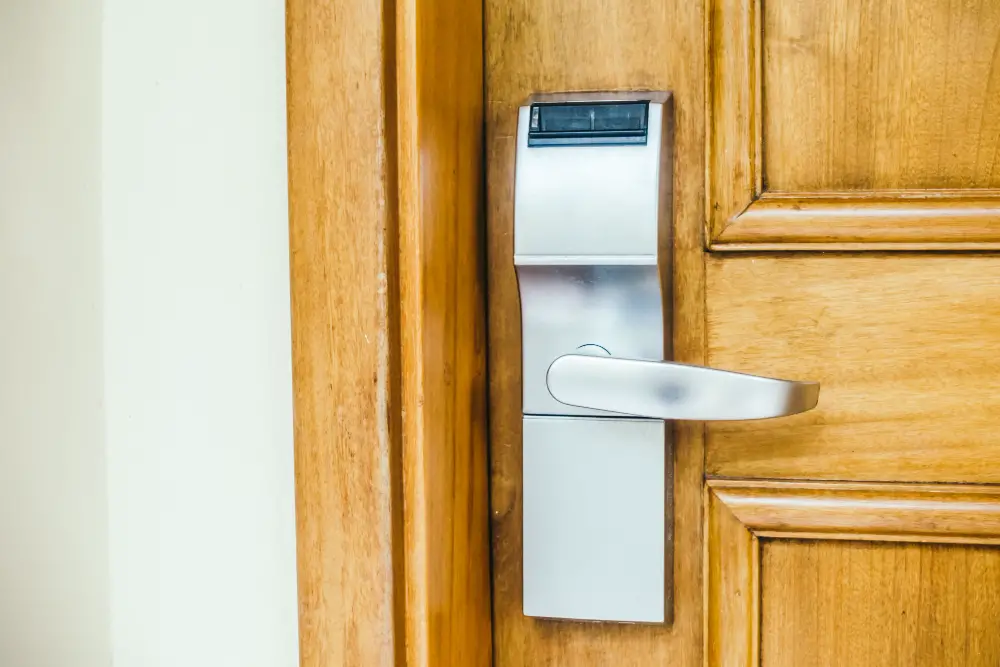
Door stops are thin strips of wood that run along the sides and top of the pocket door frame to prevent it from sliding too far into the wall cavity. To access these strips, open your pocket door until it’s flush with one side of its frame.
Next, use a pry bar to gently loosen each stop by inserting it between the stop and jamb. Tap on one end with a hammer until you can get your fingers behind it, then pull outwards towards yourself while wiggling back and forth slightly if necessary.
New Track and Pocket Door Rollers

To do this, you’ll need to remove the door from its track and take out the old rollers. Once removed, measure their dimensions to purchase new ones of a similar size.
Next up is installing a new track for your pocket door. This process involves cutting an access hole in the drywall next to where your current track sits so that you can remove it easily.
You’ll then install a new one using screws or nails before rehanging your pocket door on its newly installed hardware.
When purchasing replacement parts for rollers and tracks, ensure they are compatible with each other and with any existing hardware on your pocket doors, such as handles or locks.
Cut an Access Hole
This step is necessary if you need to replace the track or rollers of your pocket door.
Use a drywall saw or utility knife to cut an access hole in the drywall next to your pocket door frame. Cut a large rectangular opening to reach inside and work on the track and rollers.
Once you have created an access hole, remove any debris from the inside before replacing parts of your pocket door system.
Install the New Pocket Door Track
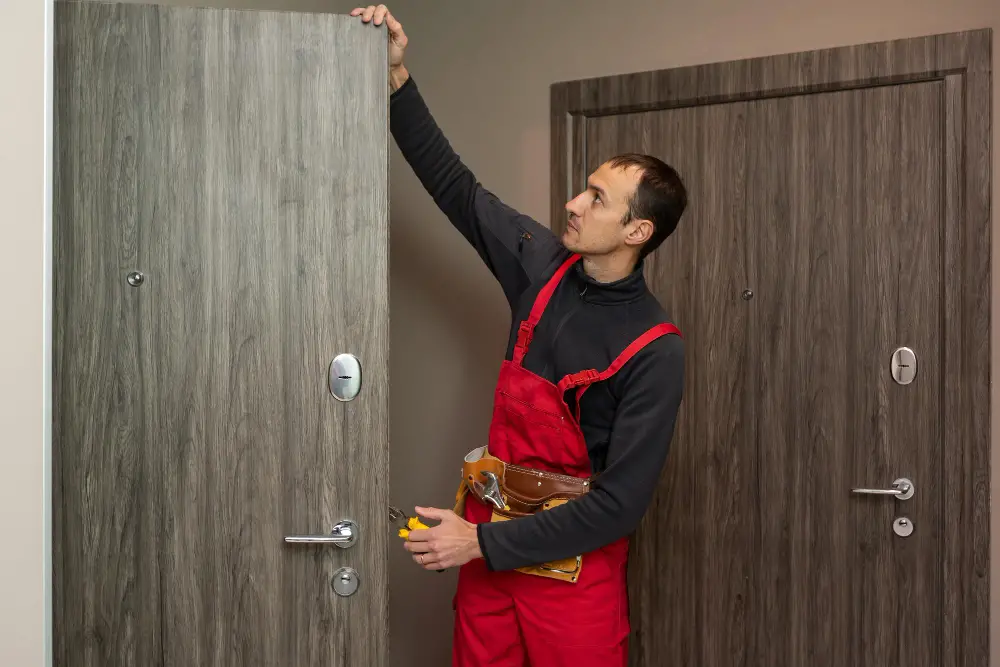
Start by measuring and cutting your new track to fit the length of your pocket door opening. Next, use screws or nails to attach the track to your header board securely.
Ensure you align it properly with any pre-existing screw holes in both sides of the frame before securing them tightly. Once installed, test out sliding your pocket door back and forth along its newly installed tracks.
If everything is working smoothly, then congratulations! You’ve successfully fixed a sticking or misaligned pocket door without replacing it entirely.
Use a 2×6 to Check the New Track.
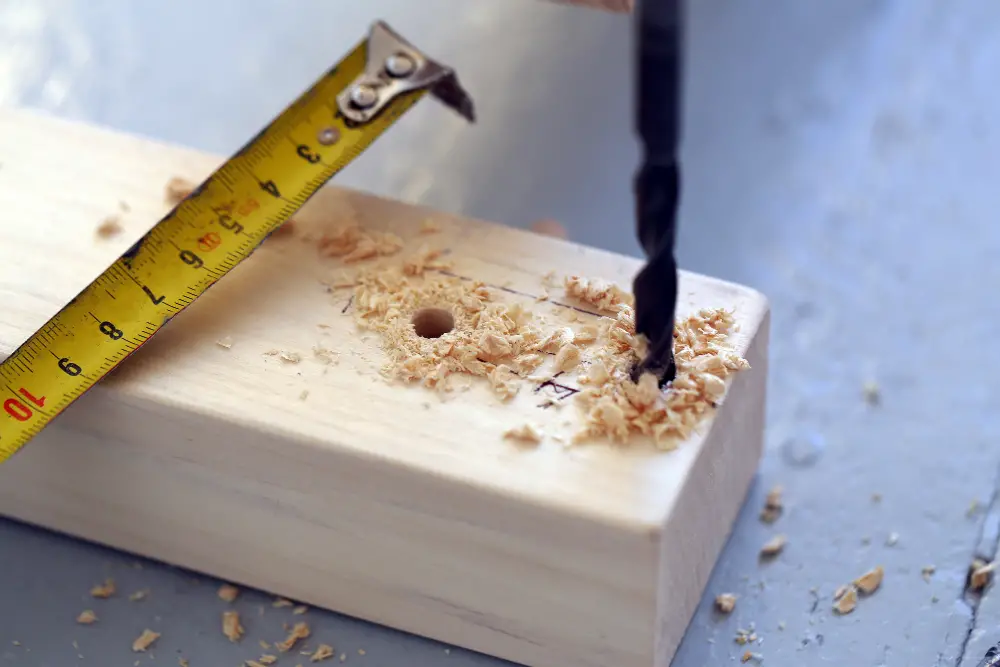
One way to do this is using a 2×6 board as a straight edge. Place the board on the track and check for gaps or unevenness between the surfaces.
If you notice any discrepancies, adjust accordingly until everything lines up perfectly. This step may seem small, but it can make all the difference in ensuring your pocket door operates smoothly.
Attach the Rollers to the Door
First, remove any old hardware from the bottom of your door panel. Then, place one roller on each side of the bottom edge of your door and secure them in place with screws.
Make sure that both rollers are level and aligned with each other before tightening them down completely. You can use a level or measuring tape to ensure accuracy.
Once you’ve attached both rollers securely, lift on the bottom edge of your pocket door and slide it into place along the new track. Test its movement by sliding it back and forth a few times – if everything is working smoothly, congratulations! You’ve successfully fixed your pocket doors without having to replace them entirely.
Rehang the Door
This step requires patience and attention to detail, but you can get your pocket door back in working order with a little effort.
Firstly, lift on one side of the door while pushing down on the other side until both rollers are seated properly in their tracks. Then slide it into place so that it is flush with its frame.
Next, use a level tool or straight edge along both sides of your newly installed track. Make sure that everything is perfectly aligned before tightening any screws or bolts.
Test out your newly repaired pocket doors by sliding them open and closed several times.
Remove the Door and Trim
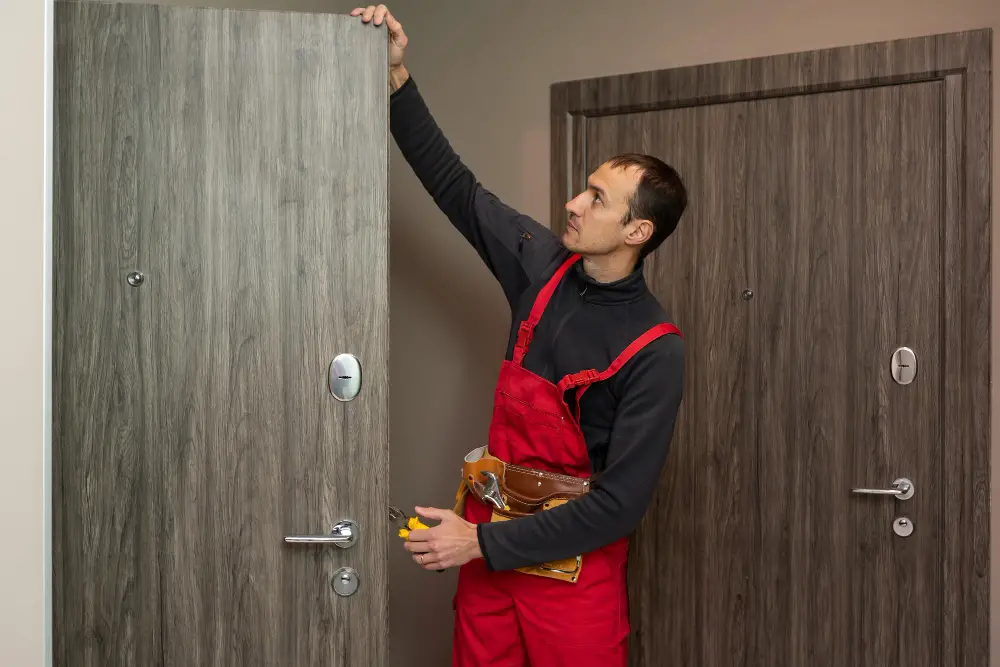
This will give you access to the track and rollers, often the culprits behind a malfunctioning pocket door. To do this, open the pocket door to flush with one of its walls.
Next, locate and remove any screws or nails holding your trim using a pry bar or screwdriver. When reassembling your pocket door, be sure to set these aside for later use.
Once you’ve removed all of your trim pieces, gently lift out your sliding panel from its track by tilting it towards yourself until it clears both sides of its frame.
Open the Wall
This step can seem daunting at first, but with a little patience and some basic tools, you can access the track and rollers that are causing issues.
Remove any trim or molding around your pocket door to begin this process. Then use a drywall or reciprocating saw to cut an opening in the drywall next to your pocket door.
Make sure to make this hole large enough to reach inside easily.
Once you have opened the wall cavity next to your pocket door frame, look at what’s going on behind there. You may find that debris has accumulated in the track over time, or perhaps one of its components has become damaged beyond repair.
Replace the Hardware On the Door Panel

This is a crucial step in fixing your pocket door, as worn-out or damaged hardware can cause issues with its operation. Start by removing any screws holding the old hardware in place, then install new rollers onto each corner of your pocket door panel.
Next, attach a new latch mechanism to one side of your sliding panel using the screws provided. Make sure that this mechanism lines up perfectly with its counterpart on the other side so that they can lock together when closed properly.
Reattach any handles or pulls previously installed onto both sides of your sliding panel using their respective screws and bolts.
Adjust the New Hardware

Next, adjust the position of both rollers so that they fit snugly into their respective pockets in your wall. This will ensure smooth operation when opening and closing your pocket door.
Start by adjusting the height of the rollers so that they are level with each other and sit flush against the track. Use a screwdriver to turn the adjustment screws on each roller until they equalize height.
Test out your newly adjusted hardware by sliding your pocket door back and forth along its track several times. If everything is working smoothly, congratulations! You’ve successfully fixed your pocket door without having to replace it entirely.
Fixing a sticking or misaligned pocket door may seem daunting, but following these simple steps can save you money while ensuring seamless functionality for years to come.
Replace the Trim and Stops
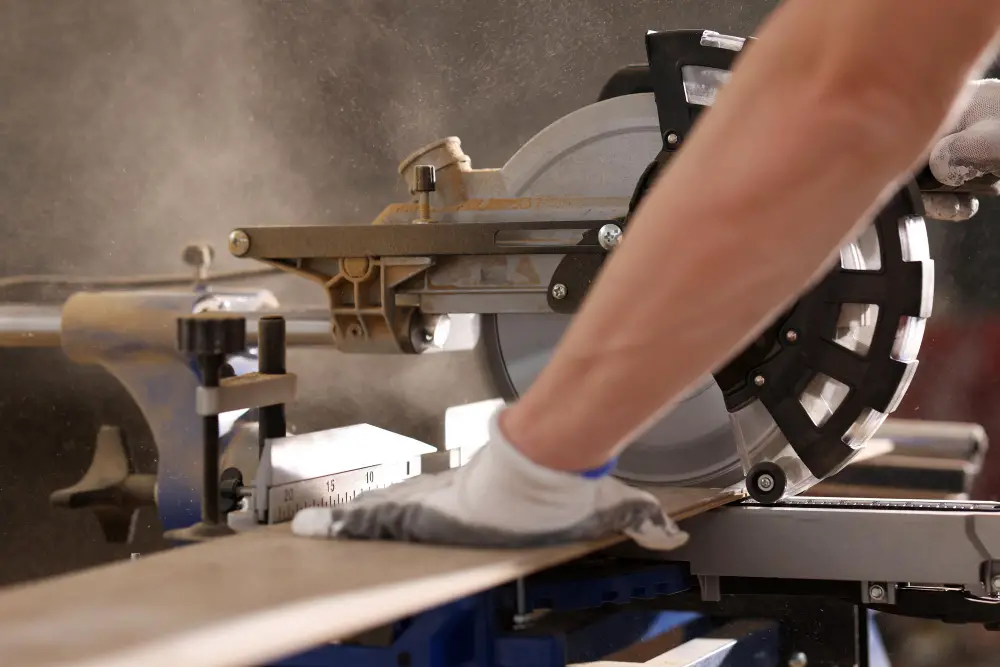
This is essential to ensure your pocket door looks as good as new. To do this, start by measuring the length of each piece of trim that needs replacing.
Cut a new piece of trim to size using a saw or miter box.
Next, attach the new trim pieces to their respective locations on either side of the doorway using finishing nails or screws. Be sure to countersink them to avoid sticking out from the surface.
Install new stops at both ends of your pocket door opening where it meets with its frame when closed. These will prevent your newly repaired sliding doors from going too far into their pockets and getting stuck again.
Repair the Wall

In this case, you must repair the wall before rehanging your pocket door. To do so, remove any loose drywall or plaster around the area where your pocket door slides into its cavity.
Next, cut a piece of drywall to fit over the hole and secure it with screws. Use joint compound and mesh tape to cover any seams between old and new drywall sections.
Once everything is smooth and even again, sand down any rough spots on both sides of the repaired area until they’re flush with surrounding surfaces.
Replace the Pocket Door Pull
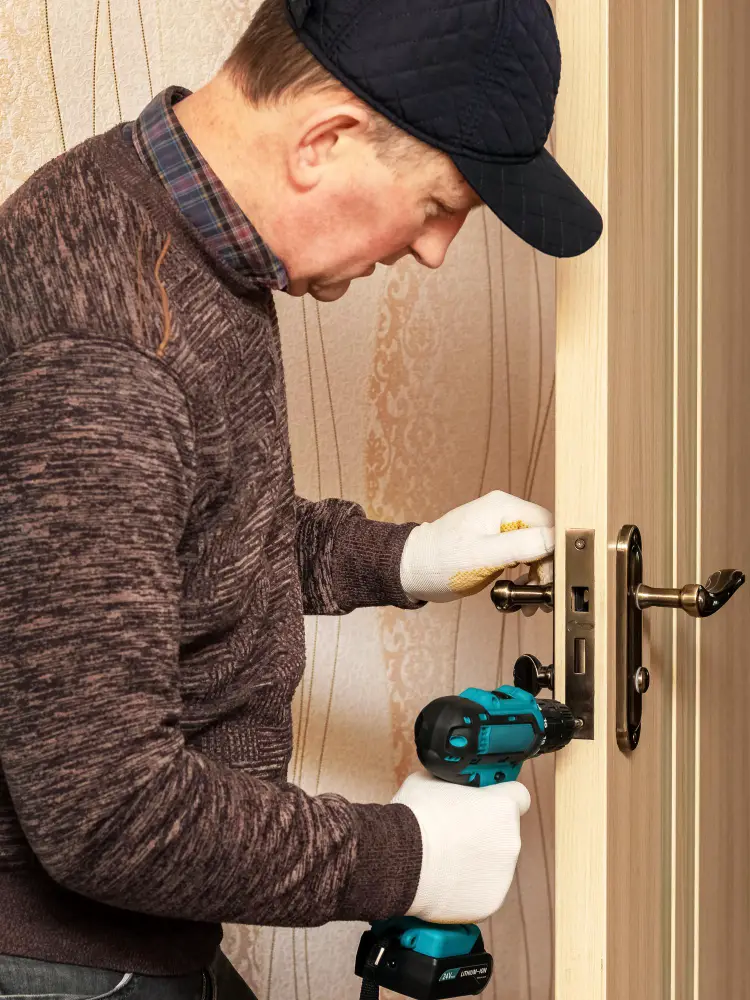
If your current pull is damaged or worn out, replacing it can be a simple fix that will make a big difference in how smoothly your pocket door operates.
Remove any screws or fasteners holding the old one in place to replace the pocket door pull. Then, carefully remove the old pull from its housing on both sides of the wall.
Next, install your new replacement pulls into their respective housings on either side of the wall. Ensure they are securely fastened with screws and flush against their respective surfaces.
Test out your newly installed pulls by sliding them back and forth to ensure smooth operation.
Create an Opening for the Latch

This is crucial in ensuring your pocket door stays securely closed and doesn’t slide open unexpectedly. To do this, use a chisel or router to carve out a small indentation on the edge of the door where the latch will sit.
Make sure that it’s deep enough so that when you close the door, there is enough space for the latch to click into place.
If you’re not confident using power tools like routers or chisels, consider hiring a professional carpenter or handyman to help with this step. It’s important for functionality and safety – without proper latching mechanisms, your pocket doors could pose potential hazards if they accidentally slide open.
FAQ
Can you fix a pocket door without removing the trim?
Yes, some pocket door problems can be fixed without removing trim, but most issues require the removal of select areas of trim.
Can you fix the pocket door without removing the drywall?
Yes, you can fix a pocket door without removing drywall by simply lifting the door off the sliding track after removing the trim around the door.
Why is my pocket door not sliding correctly?
Your pocket door is not sliding correctly, likely due to an issue with the track system, rollers, or hardware and components.
What are the common issues with pocket doors and their solutions?
Common issues with pocket doors include misaligned tracks, damaged rollers, and stuck doors, which can be resolved by adjusting or replacing the hardware, repairing the door track, and lubricating the rollers.
How can I maintain my pocket door to prevent future problems?
To maintain your pocket door and prevent future problems, regularly clean the tracks, lubricate the rollers, and ensure proper door alignment.
What tools and materials are needed to fix a pocket door?
One needs a screwdriver, wrench, pliers, level, tape measure, replacement rollers, and a pocket door track assembly to fix a pocket door.
You may also like to read:
